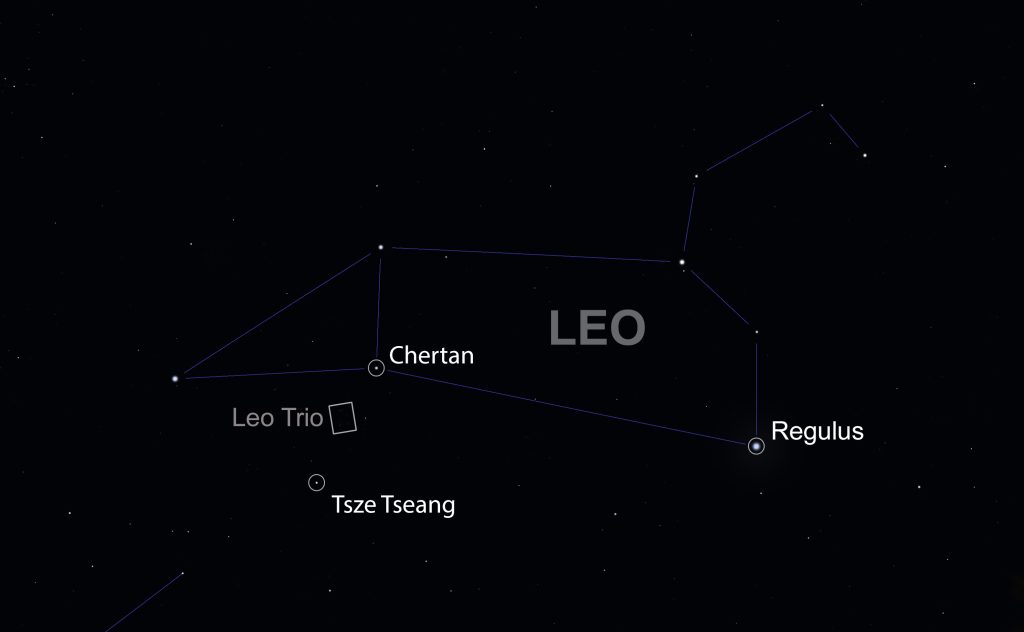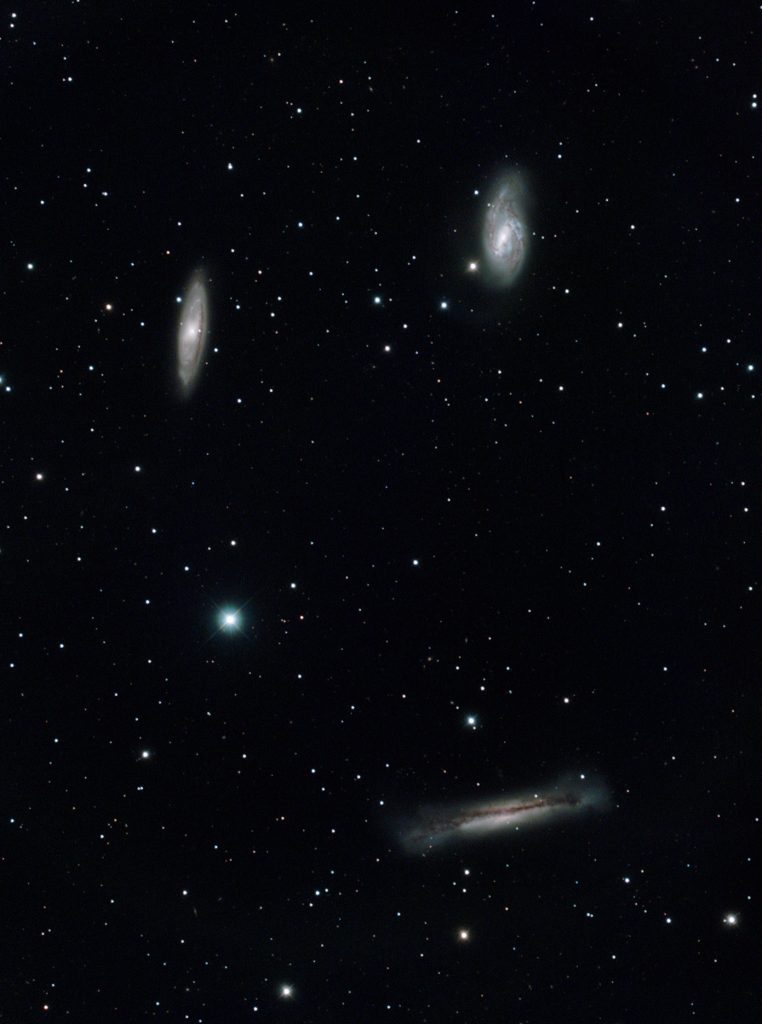
Now that we have reached summertime in the northern hemisphere, many of the Milky Way’s splendors are appearing in the early evening sky while views of many galaxies are fading shortly after sunset. There is still time to check out quite a few of the brighter galaxies from your backyard, and sometimes more than one galaxy can be spotted in the eyepiece. In May 2025, we featured a gorgeous pair of galaxies that can often be seen simultaneously through a telescope; this month, we feature a triplet in the constellation Leo, the lion, that often share the spotlight of an eyepiece and are often referred to as the Leo Trio.
Spirals with Turbulent Pasts
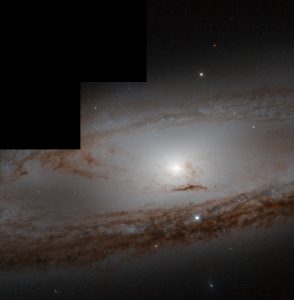
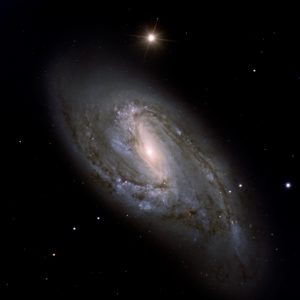
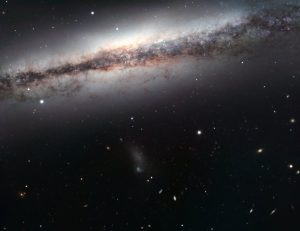
The Leo Trio is comprised of the spiral galaxies with the designations NGC 3628, M65, and M66. “NGC” is the abbreviation for the New General Catalog, an astronomical inventory of nearly 8,000 star clusters, nebulae, and galaxies. “M” is the abbreviation of “Messier,” the surname of comet hunter Charles Messier, who catalogued about 110 “faint fuzzies” that he knew not to be comets since they didn’t move over time. The Messier list tends to have some of the brightest objects found in the deep night sky. Messier missed NGC 3628 in his scans of the sky, but it was picked up by noted astronomer William Herschel about four years after Messier’s discovery of M65 and M66, both of which Messier discovered on March 1, 1780. The three galaxies lie 30-40 million light-years from Earth.
Due to our oblique view of M65 and M66, it is easy to discern large sweeping arms that show without a doubt that they are both spiral galaxies. NGC 3628, however, doesn’t show its spiral arms to us, at least in visible light, due to our edge-on view. However, we can clearly see it is relatively wide and thin with a prominent dark dust lane running through the glow of countless stars, two common characteristics of spirals. Due to their proximity to one another, it is very likely that the three galaxies have interacted gravitationally in the past. In fact, the very prominent warp seen in NGC 3628’s dust band is the smoking gun of the gravitational tug its companions have inflicted. Close-up views of M65 show its spiral arms also have a slight warp and a possible bar of stars running through the center of the galaxy, all of which are additional signs of past interactions.
Spotting the Trio
Though best visible in the evening from late winter through spring, there is still time to catch the Trio before they are lost in the glow of sunset. Thankfully, one can easily find them after the last glow of sunset fades by using some bright, naked-eye stars of Leo as guideposts. First, locate the bright star Chertan, a little ways to the left/east of Leo’s brightest star Regulus. Next, slowly begin moving to the lower left towards the moderately bright star Iota Leonis, also known as Tsze Tseang. About halfway in between the two stars, you should come upon a group of faint smudges—you’ve found them!
